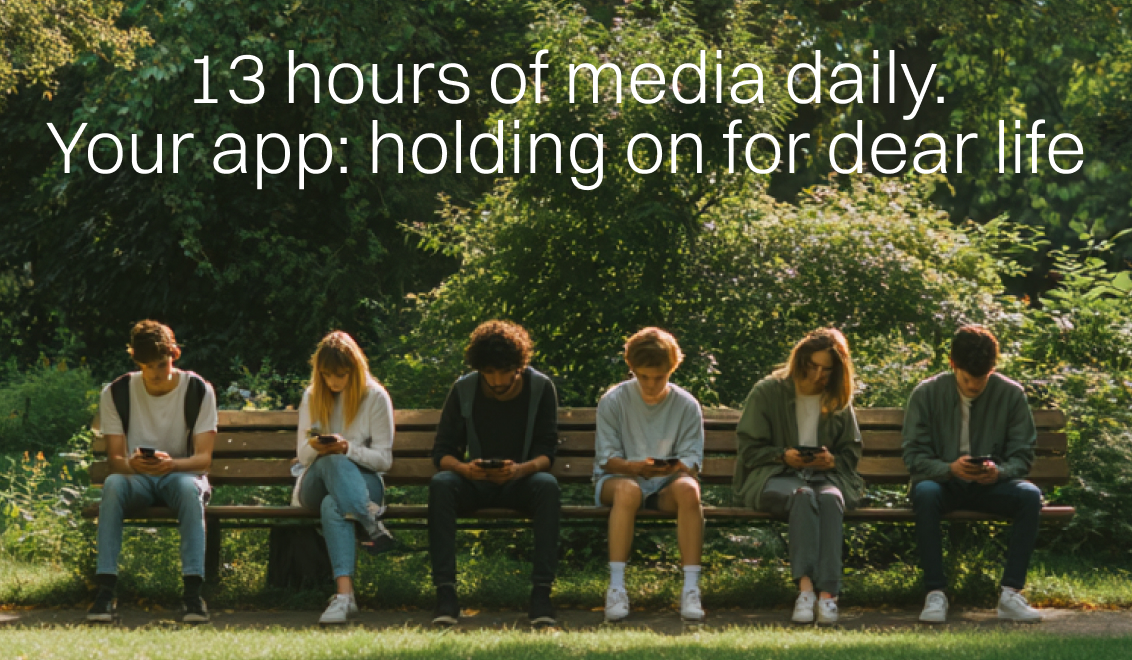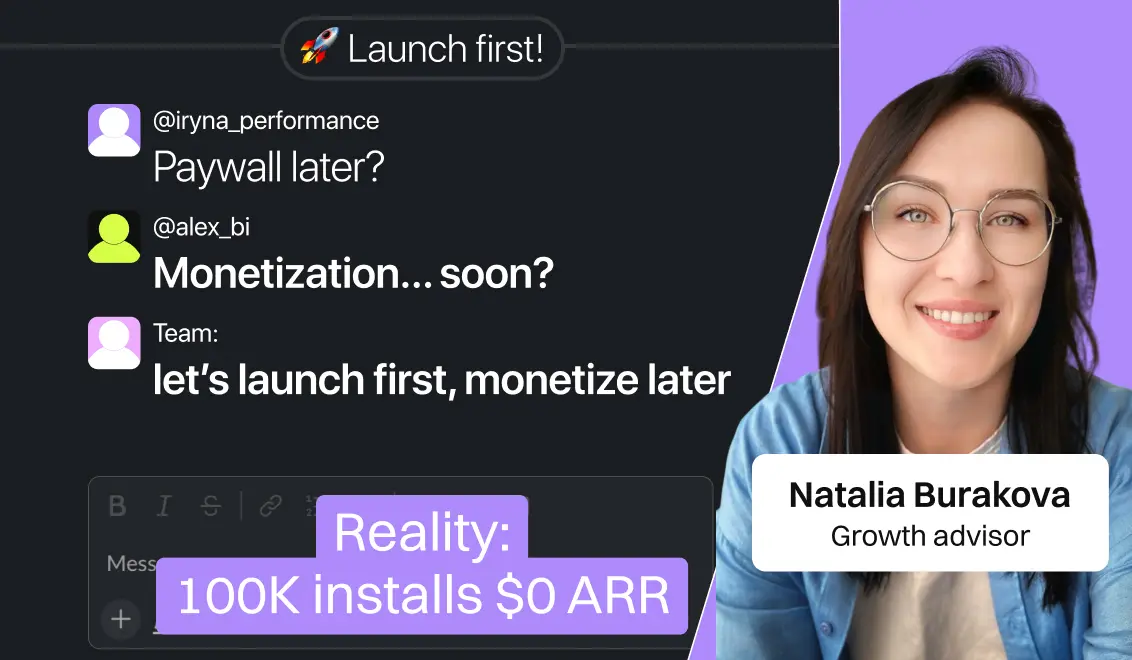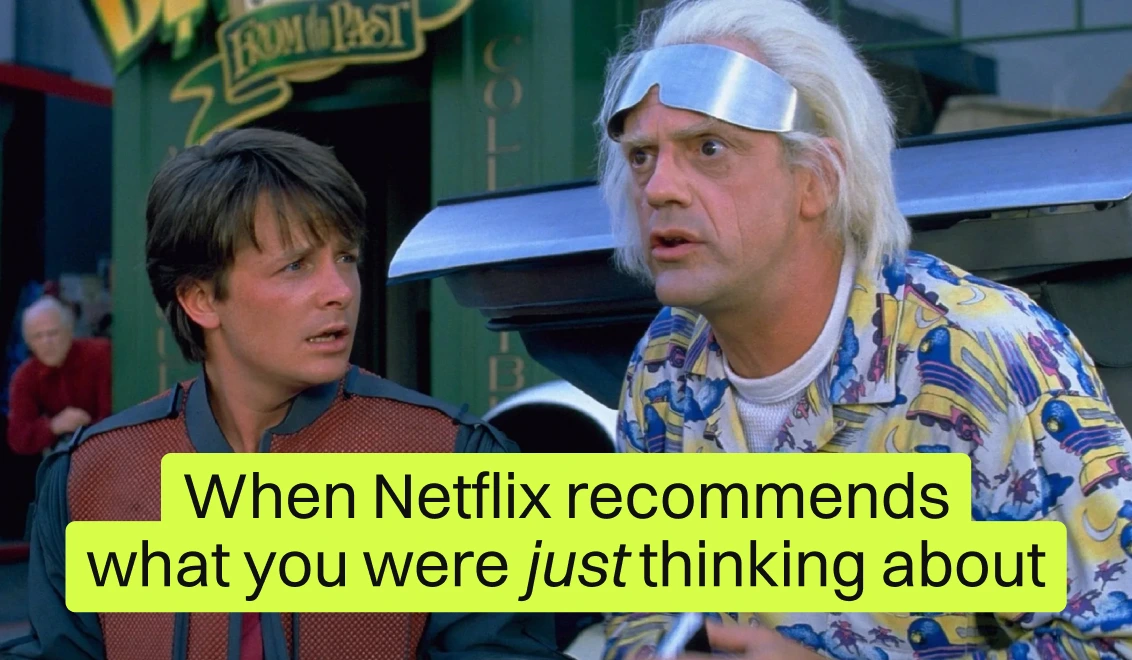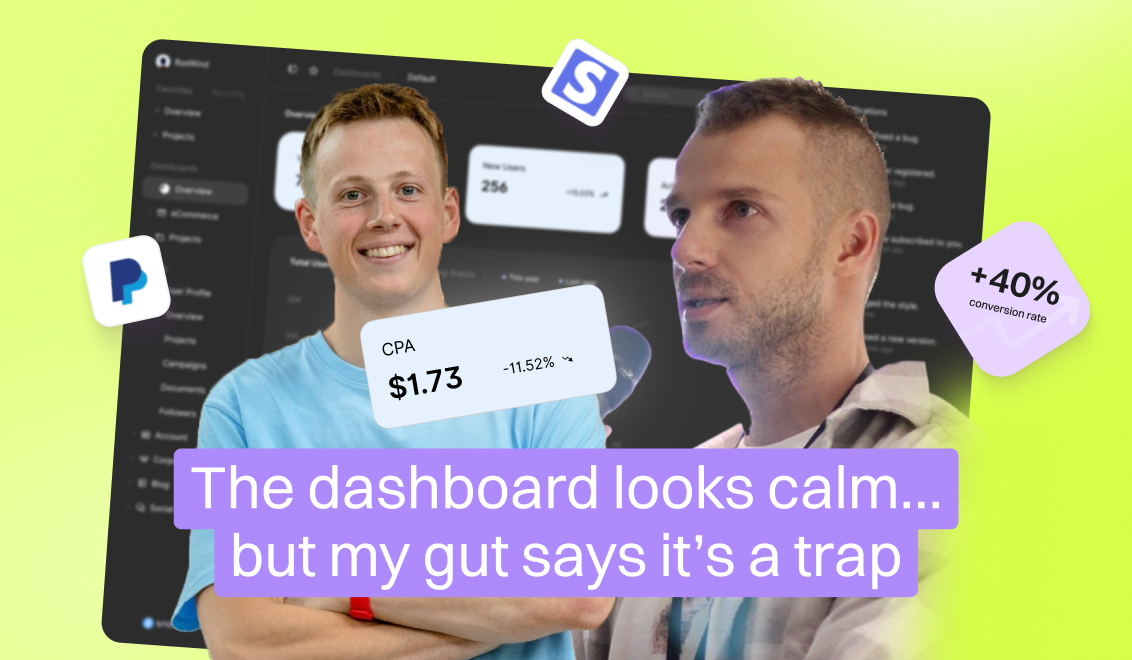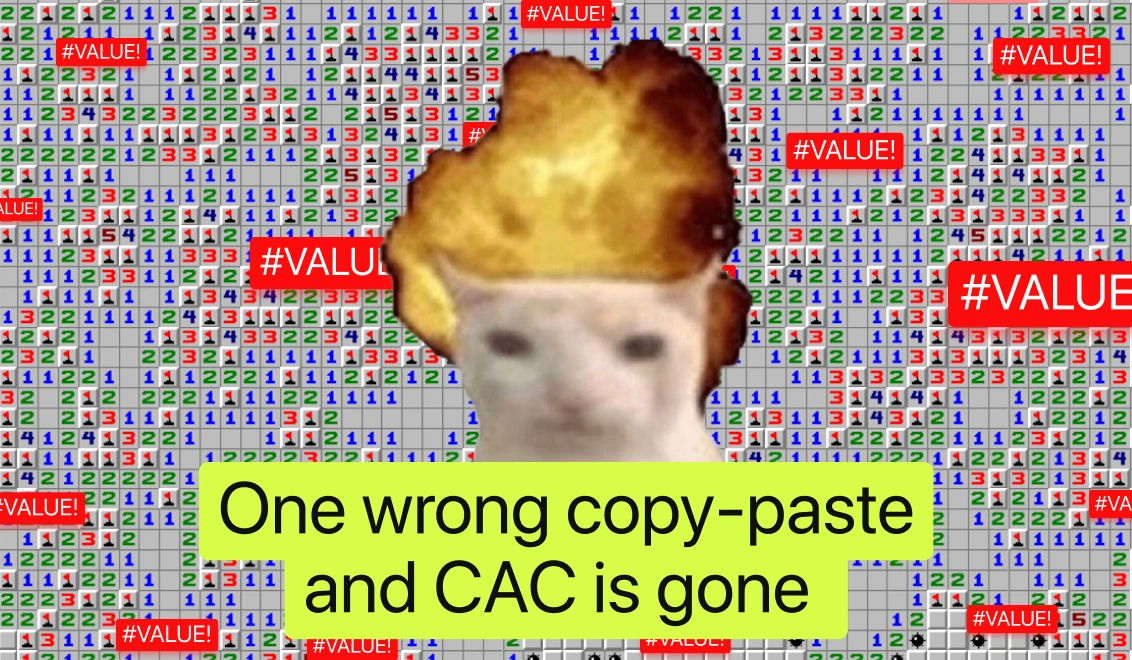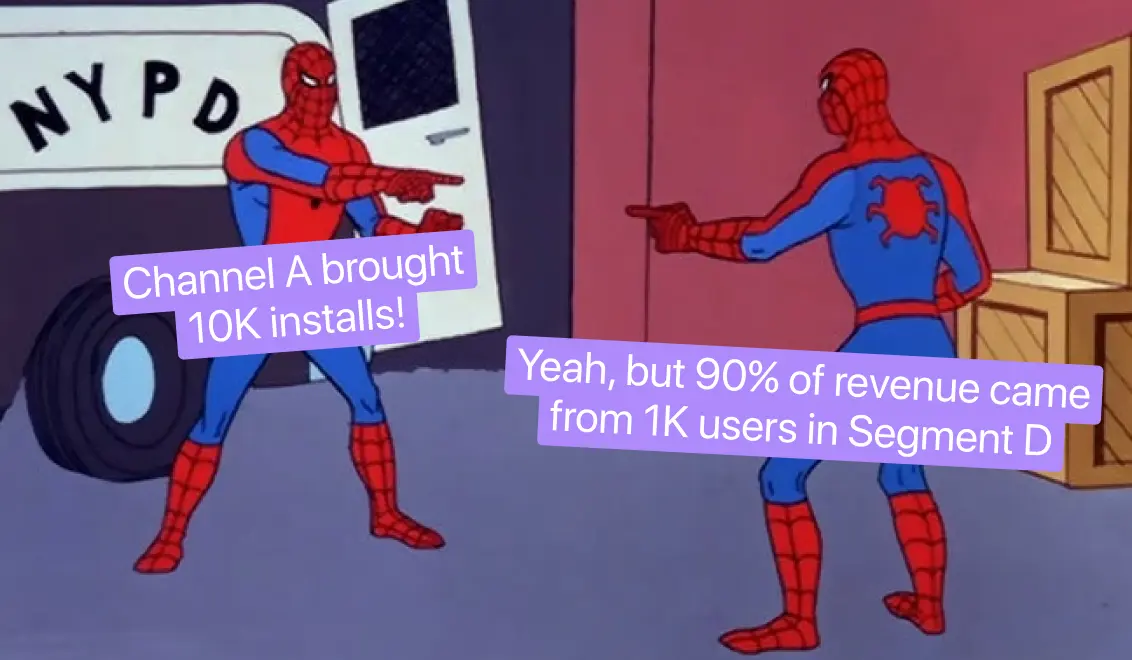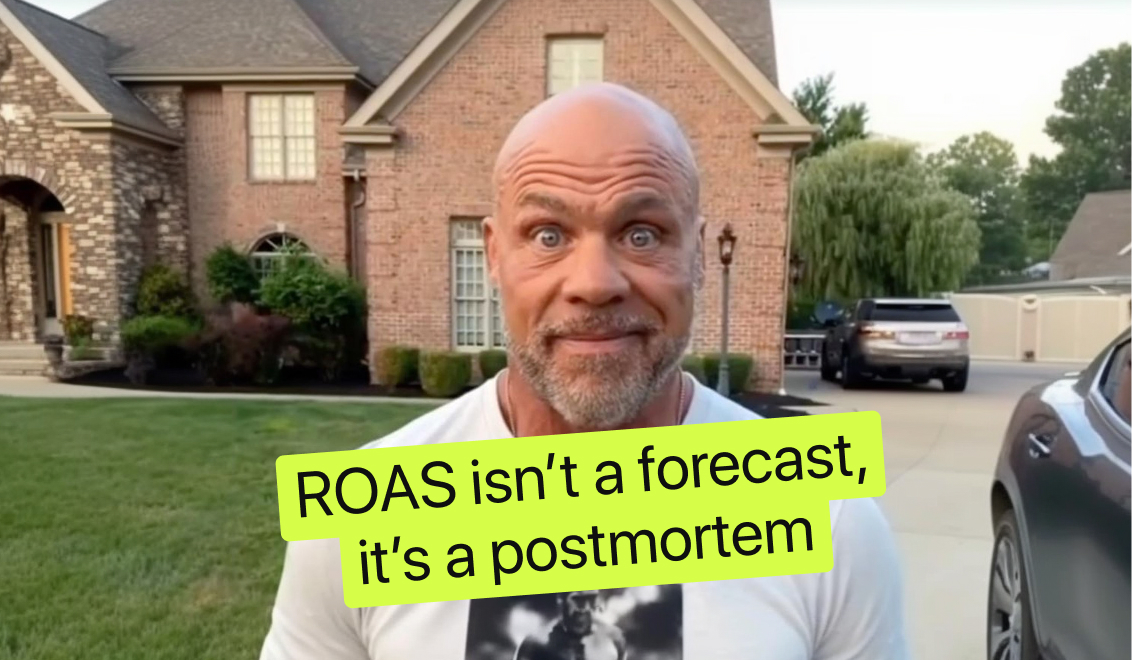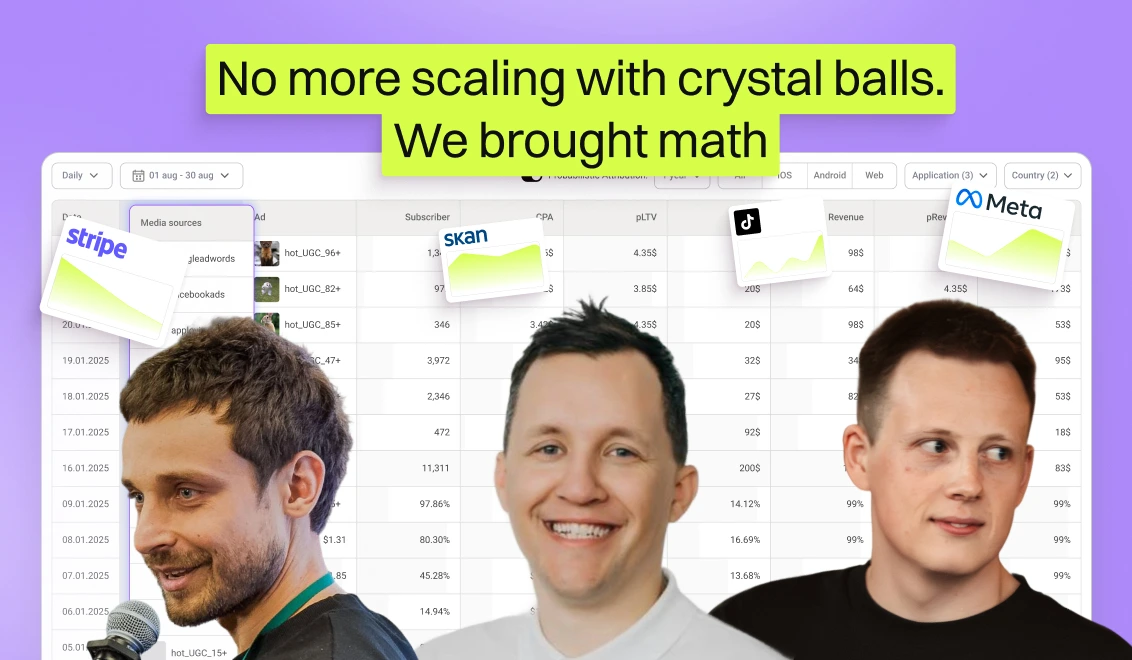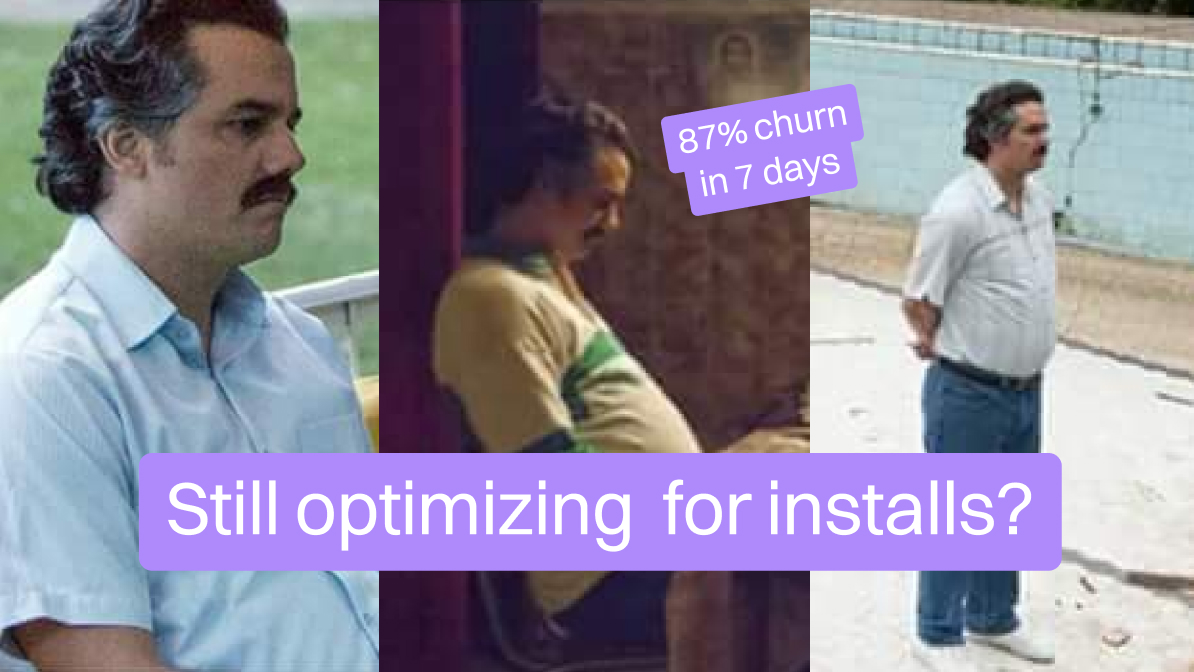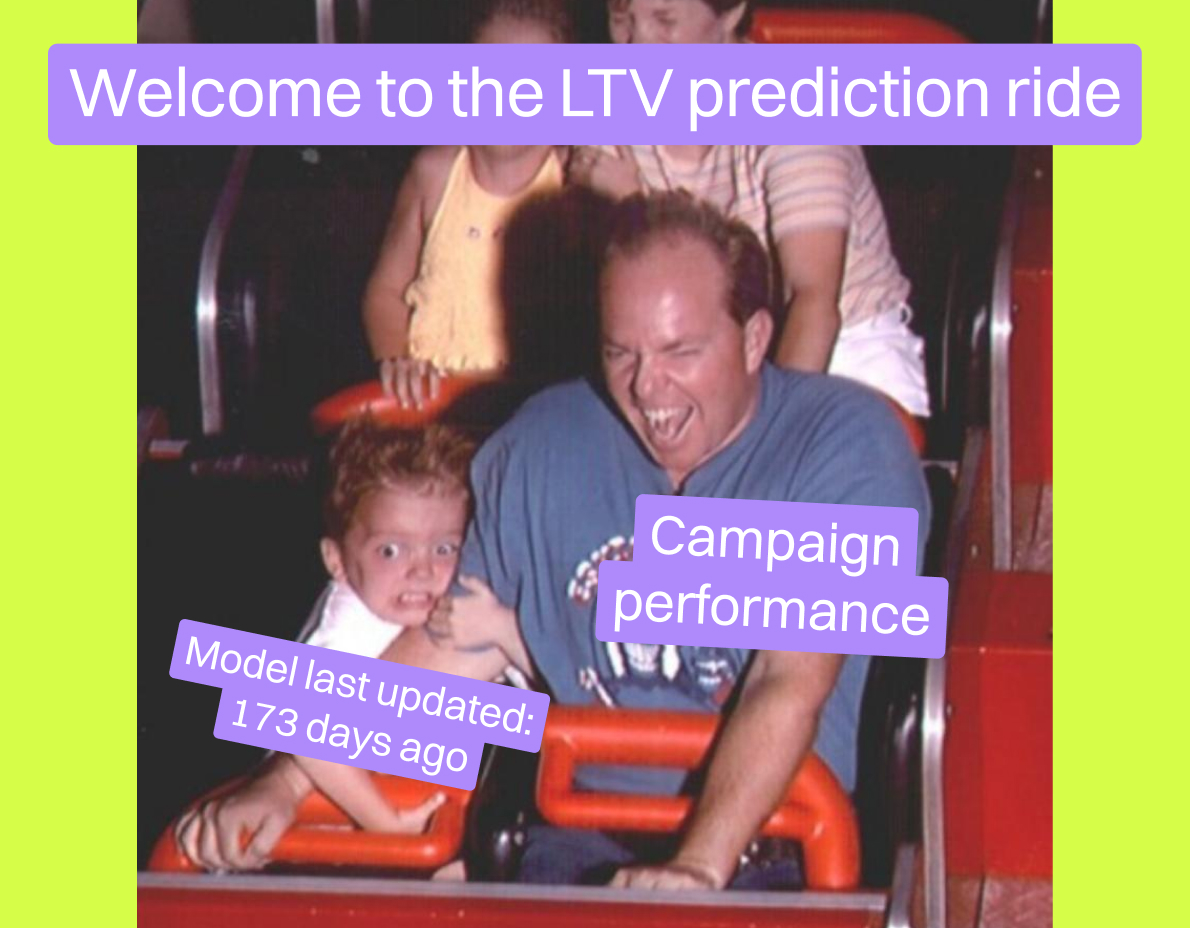Why ROAS and CPA are lying to you in App Marketing

Every performance marketer has felt the dopamine hit of a low CPA or a Day 7 ROAS that looks amazing on paper. But what happens when that same campaign, after weeks of budget, fails to pay back?
In the world of user acquisition strategy, ROAS and CPA are treated like gospel. But these two metrics, as seductive as they are, often lead even seasoned marketers down the wrong path. Today, we’re pulling back the curtain on why that happens and what smarter, more scalable teams do instead.
This isn’t just a theoretical rant. We’ve worked with growth marketers, UA managers, and data-driven teams running campaigns across multiple geos and platforms. And here’s what we’ve learned: success doesn’t come from chasing low CPAs or early ROAS. It comes from understanding, forecasting, and scaling based on actual value, aka LTV.

ROAS and CPA: metrics with hidden traps
ROAS is a snapshot, not a strategy
ROAS tells you how much revenue you’ve generated shortly after spending. It’s useful, sure, but it’s blind to what happens next: renewals, upsells, product tweaks, or churn spikes. It’s like judging a meal by the appetizer. It gives a momentary view but doesn’t reveal the real story.
CPA without context is dangerous
CPA gives you a feel-good cost per subscriber, but it tells you zero about what that user will generate. A $5 CPA from UAE might be a trap if that cohort churns after Day 3, while a $30 CPA in the US may quietly build a revenue goldmine.
It’s not that these metrics are useless. It’s that they’re incomplete. And for marketers managing serious budgets, that incompleteness costs money. Focusing only on acquisition costs without understanding post-install behavior is like buying leads with no idea if they ever convert.
What ROAS and CPA don’t tell you
Subscription structure changes everything
Here’s a real case study we shared during the webinar with AdQuantum that perfectly illustrates how misleading early ROAS can be when pricing models shift.
We tested three monetization structures in a mobile app to understand how subscription mix affects long-term revenue. The variables? A different blend of weekly, monthly, and yearly plans — all with the same UA budget behind them.
- Group 1 had a 50/50 split between Weekly and Yearly subscriptions. It showed strong early ROAS, making it look like the best performer out of the gate. But by Day 365, growth had plateaued, and its LTV curve flattened early.
- Group 2 used a 70/30 Weekly-Yearly mix. It started slower, but by Day 180 had caught up. The higher volume of lower-commitment users meant churn was higher, but it still tracked steadily toward payback.
- Group 3, which offered 70% Monthly and 30% Yearly plans, performed worst in early ROAS. On paper, it looked like a waste of budget. But by Day 365, it had overtaken both other groups in total LTV. Why? Monthly users converted to longer-term plans and responded better to onboarding and upsell flows over time.

What looked like a bad bet early on turned out to be the most profitable variant long-term.
The takeaway: ROAS couldn’t show that trajectory. It only measured what happened in the first days, not what those users were worth 3, 6, or 12 months later. And if we had optimized based on early ROAS alone, we would have killed the best-performing variant.
This is exactly why UA teams need to understand subscription dynamics, not just traffic costs. Even small changes in paywall mix, trial settings, or pricing can swing LTV dramatically. And you won’t see that unless you’re looking at cohort-based revenue curves over time.
Geo-specific behaviors matter more than cost
Here’s another real example that shows why local context matters more than surface-level metrics. In one case, a subscription app using a web funnel reported much higher CPA in the UAE than in the US. At first glance, it looked like the US was the more efficient market. But once the data settled, the opposite was true: users in the UAE delivered significantly higher LTV and better predicted ROI.
Why? Users in that market were more likely to choose higher-tier subscription plans and showed stronger rebill behavior. So even though the CPA was higher, the return on spend was better.
This is the risk of optimizing purely by cost. ROAS benchmarks that ignore geography, culture, and behavioral patterns miss the bigger picture. The result? UA teams scale low-ROI regions and under-invest in high-value ones.

LTV as a strategic lens, not just a metric
How LTV supports long-term scaling
We’ve covered how ROAS and CPA can mislead you, especially when they’re used to judge value too early. So the next question is: what should you be optimizing for instead? If your goal is to scale sustainably, you need a metric that looks beyond the click and into the future. That metric is LTV.
Customer Lifetime Value (LTV) tracks the full revenue arc from install to renewal. Smart UA teams use it to justify higher CPAs, model payback periods, and assess whether users are worth acquiring. It lets them forecast ROI instead of waiting for it.
This allows marketers to make high-confidence investments in channels, creatives, and geos that may not perform early but show strong value downstream.
LTV enables smarter creative, geo, and funnel testing
Knowing LTV by cohort, funnel variant, or pricing model helps marketers optimize for actual business results, not just media metrics. Instead of asking "Which ad got the most installs?" we ask "Which audience delivers sustainable value?"
Running controlled tests on onboarding flows, subscription offers, or upsell timing becomes significantly more effective when LTV is the metric being evaluated.
Case Studies: campaigns that looked like fails but weren’t
The delayed payoff that proved profitable
One real case involved a web-to-web campaign. At the start, things didn’t look promising – CPA was nearly double the target for the first few months, and performance metrics were disappointing. But instead of pulling the plug, the team ran funnel and paywall tests and scaled gradually.
By Month 4 or 5, CPA came down to the target range, and the cohort’s LTV ended up outperforming projections. If we had optimized based on early ROAS alone, we would have killed a campaign that ultimately became a top performer.

Misleading metrics vs. real user value
Here’s another example from a user acquisition campaign where we A/B tested two different ad creatives. Early ROAS crowned one as the clear winner, it drove installs quickly and delivered short-term returns. But as the weeks went by, we noticed something odd: those users churned fast. They didn’t convert, didn’t stick, and certainly didn’t scale.
Meanwhile, the "losing" creative, slower to convert, and less flashy, quietly brought in users who stuck around, upgraded, and delivered strong LTV over time. The early metrics led us in the wrong direction. Only when we tracked cohorts over time did we see the full picture.
It’s a reminder that early wins often fade. Great creatives don’t just get attention, they bring in the right kind of user. That’s the difference between a spike and a sustainable business.
Building a better UA strategy with LTV at the core
By now, it's clear that ROAS and CPA can distort performance and lead teams to scale the wrong campaigns. LTV is a more reliable compass, but even that comes with challenges.
The gap between LTV insights and real-time action
Here's the truth most UA teams know too well: even if you're committed to tracking LTV, the data often comes too late. You may not see the full revenue curve until 30, 60, or even 90 days after acquisition. That’s fine for post-mortems, but useless when you need to make spending decisions today.
Worse, the data you do have is often incomplete or misleading. Many teams rely on averages: average duration, average price point, average conversion time. But those "averages" smooth over the nuances that matter most: LTV by geo, funnel variant, creative, or user type. One version of a paywall might bring in higher-tier subscribers. Another might churn in days. If you're not modeling this correctly, you’re guessing.
Some UA teams try to cobble this together manually with spreadsheets and exports from Firebase, MMPs, or BI tools. But by the time it’s clean and modeled, the budget’s already gone, and the decision window has closed.
That’s why we built Campaignswell
Campaignswell gives growth teams access to predictive LTV and ROI insights from the moment a campaign launches. It’s purpose-built for UA marketers who need to make real decisions in real time.
Here’s what it does:
- Predicts LTV and payback based on early cohort behavior
- Surfaces revenue curves by geo, funnel, pricing model, and creative
- Shows which campaigns are on track to break even, and which are just burning spend
- Aligns UA, product, and monetization teams around one unified revenue view
Campaignswell takes the guesswork out of scaling. Instead of reacting to lagging ROAS, you can act on accurate predictions. Instead of gut calls, you get clarity. That’s what a better UA strategy looks like with LTV truly at the core.

Forecasting beats reacting
CPA and ROAS are backward-looking. Predictive LTV lets you see where your revenue is heading. You can course-correct early, allocate budget more confidently, and invest in long-game wins.
Modeling future value lets you de-risk bold UA moves and unlock budgets faster.
When to trust early signals and when not to
ROAS spikes can feel exciting, but they can mislead. Instead, look at leading indicators like early retention and engagement by cohort. This gives you a better sense of who will actually convert long-term.
The trick is to use early signals as clues, not answers.
The value of modeling multiple scenarios
Top marketers don’t just build a plan A – they forecast scenario B and C too. They model user LTV across segments and timelines, allowing flexibility and faster decisions when performance shifts.
This reduces the impact of sudden platform changes (looking at you, SKAN) or surprise shifts in creative fatigue.
Conclusion: think beyond the click, scale beyond the dashboard
ROAS and CPA aren’t bad, they’re just often not enough. For serious growth, you need to think value-first. Track real revenue, model long-term outcomes, and make smarter decisions.
If you want to go from efficient spend to profitable scale, rethink the metrics you’re prioritizing. Getting all these pieces to work together isn’t easy but the right tools can help. That’s where Campaignswell comes in. Come take a look and see what’s possible.

Co-founder & CEO at Campaignswell









